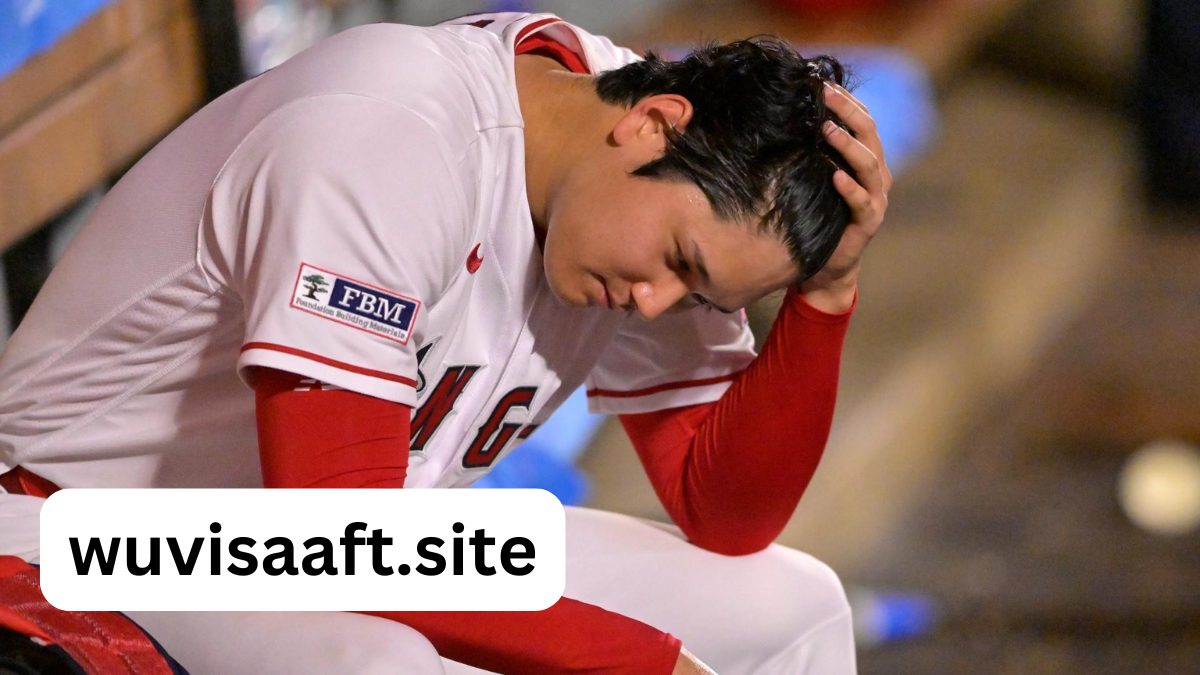Shohei Ohtani Injury Report: What It Means for His Season
Shohei Ohtani Injury is a once-in-a-generation talent, redefining the game of baseball with his rare ability to excel as both a pitcher and a hitter. Since his debut in Major League Baseball (MLB), Ohtani has become a global phenomenon, captivating fans with his power at the plate and dominance on the mound. However, with great talent comes great physical strain, and injuries have plagued his career at various points.
Ohtani’s latest injury has once again sparked discussions about his longevity in the sport and how it could impact his team, the Los Angeles Angels. Fans and analysts alike are concerned about the severity of the injury, its effect on his dual-role playing style, and the timeline for his return. In this article, we will delve deep into Shohei Ohtani injury history, the latest updates, and the potential consequences on his performance, career, and the MLB as a whole.
Shohei Ohtani Injury History
Shohei Ohtani injury concerns date back to his early days in professional baseball, long before he set foot in the MLB. During his time in Japan’s Nippon Professional Baseball (NPB), Ohtani suffered from ankle and hamstring issues that occasionally limited his playing time. However, it wasn’t until he joined the Los Angeles Angels in 2018 that his injury woes became more prominent.
One of the most significant injuries in his career came in 2018 when he was diagnosed with a UCL (ulnar collateral ligament) tear, requiring Tommy John surgery. This surgery forced him to sit out the entire 2019 season as a pitcher, although he continued as a designated hitter. In 2020, he suffered a flexor strain in his pitching arm, further delaying his return to full-time pitching duties.
In addition to arm-related injuries, Ohtani has dealt with minor ailments, including knee surgery in 2019 to address a bipartite patella. His history of injuries raises concerns about his ability to sustain a long and healthy career while playing as both a pitcher and a hitter.
Latest Shohei Ohtani Injury Update
Shohei Ohtani Injury most recent injury has once again shaken the baseball world. During a routine game, Ohtani experienced discomfort, leading to a medical evaluation that revealed a serious issue. Reports suggest that he may have re-injured his UCL, a potentially devastating setback for his pitching career.
The team has been cautious with releasing detailed information, but sources indicate that Ohtani could face another extended period of rehabilitation. Given his history with Tommy John surgery, another similar procedure would likely sideline him as a pitcher for an entire season.
While Ohtani’s batting remains a strong aspect of his game, injuries to his throwing arm could impact his ability to perform at his peak. The Los Angeles Angels are expected to take a conservative approach in determining the best course of action, whether that means immediate surgery or a rehabilitation program.
Impact of Ohtani’s Injury on His Performance
Ohtani injury Injury is a significant blow to both his pitching and hitting performances. As a pitcher, he has been one of the most dominant players in MLB, boasting an impressive ERA and strikeout rate. However, if his injury prevents him from returning to the mound, it could force him to transition into a full-time designated hitter.
His offensive game is also affected by injuries, as discomfort in his arms or legs can hinder his swing mechanics and power. The psychological aspect of playing through pain is another factor, as even the slightest discomfort can disrupt a player’s confidence and rhythm.
Ohtani’s unique two-way playing ability has made him invaluable, but an extended injury absence could force him to make strategic decisions about his long-term career. Will he continue as a two-way player, or will he need to focus on one aspect of his game to preserve his health?
Impact on the Los Angeles Angels & MLB
The Los Angeles Angels rely heavily on Shohei Ohtani Injury, both as a pitcher and a hitter. His absence creates a massive void in the team’s lineup and rotation, impacting their chances of competing at the highest level. Without Shohei Ohtani Injury contributions on the mound, the Angels’ pitching depth is severely weakened, forcing them to rely on less-experienced arms.
From a business perspective, Ohtani is one of the most marketable players in the league, drawing fans from all over the world. His injury affects ticket sales, viewership, and sponsorships, making it a financial blow not just for the Angels but for MLB as a whole.
Recovery Process and Expected Return Timeline
The severity of Ohtani’s injury will dictate his recovery timeline. If he undergoes another Tommy John surgery, his return to pitching could take over a year. However, if he opts for non-surgical treatment, he may return as a designated hitter sooner, albeit with limited capabilities.
The Angels’ medical staff will closely monitor his rehabilitation, ensuring that he does not rush back and risk further damage. Strength training, physical therapy, and controlled throwing programs will be essential in determining his readiness.
Possible Long-Term Effects of the Injury
Injuries like these have long-term consequences, both physically and mentally. If Ohtani continues to suffer recurring injuries, he may have to make a difficult decision about his future as a two-way player.
Some experts suggest that transitioning to a full-time hitter may extend his career, reducing the stress on his body. However, Ohtani’s passion for pitching is undeniable, making it a challenging choice for him and his team.
Conclusion
Shohei Ohtani Injury latest injury has reignited concerns about the sustainability of his two-way playing style. While his talent remains undeniable, recurring injuries could force him to rethink his approach to the game.
The Los Angeles Angels and MLB fans will closely watch his recovery, hoping for a full return to form. Whether he continues as a pitcher or transitions to a designated hitter, one thing is certain Shohei Ohtani Injury impact on baseball is far from over.








Post Comment